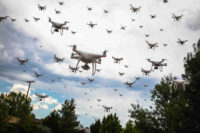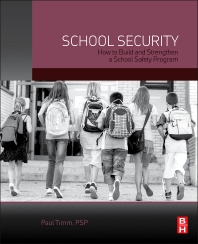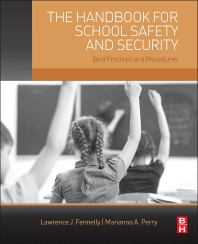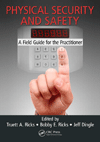11 steps to build the foundation of a school security and safety program
Let's change the mindset associated with the development and support of school security programs.

Image by rawpixel.com via Freepik
There is no time to waste; we simply cannot have another school shooting happen.
More than ever, we need engaged leadership, a clear vision, community engagement, dedicated funding and resources and energy to reset our mindset around school security and safety. The events of countless schools like Columbine, Sandy Hook, Parkland and now Uvalde have brought school security and safety to the forefront of people’s minds in the U.S. and globally. These tragic and devastating attacks tear at the very fabric of our society.
As the events unfolded in Uvalde, it became clear that the most critical action we can take is to change the mindset associated with the development and support of school security programs. This shift must be backed by adequate budgets for creating and maintaining security programs that give administrators, staff, teachers, first responders and students confidence that all resources are being leveraged to provide the safest environment possible. People need to acknowledge that “it could happen here” and stop relying on the “it will never happen here” model.
Most recently, Texas Governor Abbott directed The Texas School Safety Center (TxSSC) to conduct comprehensive safety reviews of all Texas schools, including unannounced random intruder detection audits. The entire directive includes the following five points:
- Ensure their School Safety and Security Committee meets to review their Emergency Operations Plan and address any campus safety needs. This includes reviewing their Active Threat plan.
- Ensure the School Behavioral Threat Assessment Team is trained and has reviewed procedures for each campus.
- Ensure that all staff and substitutes are trained on their specific district and campus safety procedures and that all drills are scheduled before the start of the next school year.
- Conduct an assessment of their access control procedures, such as single access points, locked instruction room doors, visitor check-in procedures, exterior door locks, etc.
- Complete these efforts by September 1, 2022, and certify this data to the TxSSC by September 9, 2022.
If people involved in schools and the mission to keep schools safe haven’t read the Marjory Stoneman Douglas High School Public Safety Commission Report, dated January 1, 2019, or the K-12 School Safety Guide, they should all do so now. At the very least, it should be required reading before school starts next year.
Additionally, carefully review internal and external communication plans and establish how communication should work in the event of an emergency. This topic is always at the top of lessons learned from any type of event. As a former military officer, with several combat deployments, communications always top the list of “leader business.” As the saying goes, “it’s a bad idea to think about communication when the crisis is happening.”
Let’s be clear; there is no single solution to fit all situations. Every school is different, and circumstances in different areas demand different answers. However, there are common elements that can be implemented to foster a safer environment. Changing the status quo will take effort and energy from leaders, but it is well worth the time as we get serious about the issue.
In order to get the conversation started, consider the following recommendations that use the concept of comprehensive security program development as the foundation for school security and safety. It is by no means the only approach or a perfect solution, but rather a framework that combines assessment, technology, community and operations in a context that may provide the structure needed to start.
- Budget for a thoughtful and comprehensive security program, and resource it appropriately. With funding comes responsibility. Government funding should come with accountability and guidance on allocating funds to support a comprehensive program. Schools need assistance on security programming matters and how to spend these funds effectively.
-
Conduct a threat, vulnerability, and risk assessment (TVRA) with a third-party consultant that is vendor-agnostic to provide unbiased recommendations for program foundations.
- This product is the foundation of all security program development. It identifies and prioritizes the possible threats, the critical assets that require attention, the vulnerabilities of those assets and recommendations on mitigating risk.
- Use the information to begin the process of building the school’s emergency plans and procedures. These documents are the foundation for developing and implementing a security program and training all parties on actions to take during an emergency. By doing this upfront, schools will save valuable time and money.
- Engage the community and community leaders. Encourage parent involvement. Build a social network to support security and safety.
- Design the technology package to include a high-performing video surveillance system (VSS), intrusion detection, access control and weapon detection tools. Technology should be used to enhance the security program, not as a be-all and end-all.
- Extend the school’s perimeter through advanced camera technology and weapon detection software. This can create a “virtual fence” through the VSS and provide early warning and additional reaction time.
- Institute an emergency notification system that is based in the physical and digital domains. Have multiple and redundant ways to notify all people of an emergency.
- Increase awareness of activities occurring within the school footprint through continuous monitoring. This can be achieved by building functioning and resourced security operations centers (SOC) in every school or district. If not financially feasible, alternatives include providing a VSS monitoring station in the administrative office with a dedicated staff member to support monitoring or remote video monitoring of the school and grounds. The latter two options should be supported by video analytics that provide alarms based on pre-determined triggers.
- Provide every school, depending on size, with the “right” amount of SRO support. Actively use SROs in perimeter patrolling that supports the “virtual fence” concept.
- Think creatively and consider technology support like “drone in a box” technology for school perimeter patrolling that is equipped with weapon detection software to enable early warning.
- Train, rehearse and exercise the entire staff and students with first responders regularly and use state and local resources to support a holistic approach. Know your law enforcement, fire, and medical response elements before an event takes place. A simple and cost-effective technique is a tabletop exercise (TTX). These can be facilitated internally or externally by a third-party security expert. Either way, it’s a great way to train.
- For existing schools, create and designate safe rooms that have ballistic protection and the means to communicate with a centralized base and first responders. Exercise the space and practice communications. Develop a primary, alternate, contingency, and emergency (PACE) communications plan. For new schools, plan safe spaces into the design, even if that means creating more square footage or adding to the initial cost of the school.
There is no longer time to point fingers and find blame. Mature leaders will move into action mode and start to make positive changes as it pertains to school security and safety. It’s time for “leaders” to stand up and get this “mindset change” in motion. Leaders at all levels of government should consider mandatory minimum standards that allow schools to build on. Let’s keep the conversation going and get moving on a substantive mindset change.
Looking for a reprint of this article?
From high-res PDFs to custom plaques, order your copy today!










